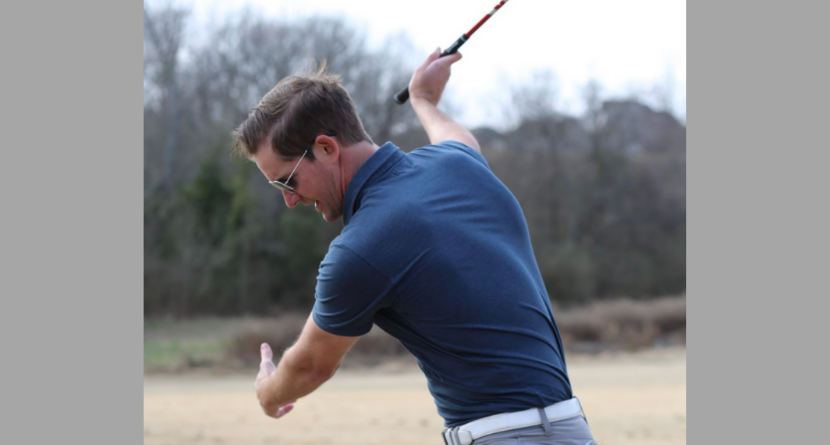In the majority of first lessons I give to students, this is the question I most often receive. These lesson often goes something like this:
We begin with an introduction discussing goals, frustrations, injury and sports history, how you learn, etc. We then take some time to gather video and I ask a few other questions to gain clarity about what you are trying to do and what you can or can’t feel. After this process, I step in and put the student where they need to be and focus them into a singular item (this could be set up, backswing, take away, impact, finish, or something else). Notice, we haven’t looked at video or discussed launch monitor data .. yet. They will then make several rehearsal swings, I’ll adjust their bodies, if needed, to make sure they are in the right place(s), and they may even hit a few balls. Somewhere in the next few minutes is where I get this question, almost verbatim:
“So what do I need to think about to get myself in that position?”
How I answer this question not only determines how the rest of the lesson will go, but likely how the rest of their golf career will go. Yes, that’s a big statement, but it’s the honest truth and what separates those who try to get better from those that actually do. Let me show you what I mean (bear with me for just two more minutes!!):
- I must acknowledge the sincerity and curiosity of this question. The student is genuinely trying to learn and figure out what has to be done to make the change “stick”. However, it represents a fundamental misunderstanding of how learning takes place, especially as regards “muscle memory” (motor learning as it’s scientifically referred to).
- By asking this question, we see an error as it represents change in anything: It’s not knowledge or thinking of something that makes you better, it’s doing something different. You may initially think that they are asking this question so that they can do something different, but I contend that it goes deeper, and it does.
- We’ve all come to believe that we have to “think” to improve, and to a certain degree, we should. It’s how golf has been understood and taught for most of us. The problem isn’t that we shouldn’t think, it’s that we are thinking with the wrong part of our brain. Golf (any movement really), is about feeling the change. You don’t think “throw it harder or softer” when throwing a ball, you just do it. This is done through the “feeling/creative” part of our brain – our right hemisphere, not our “logic/reason” part of our brain – our left hemisphere.
- If at this point I give them a thought, I then lock them into “thinking” in order to change instead of letting them learn how to “sense and move differently.” They will forever struggle to change if I give them a “thought” to use. If you’ve ever struggled to take your range swing to the golf course…THIS IS WHY! Thoughts don’t sustain a swing, especially under pressure, but feels do. It’s also why I don’t generally try to tell people “what they should feel.”
- My final point. By putting you in the right place(s) the swing you are making becomes yours. As long as it’s a thought or a feel that I gave you, it’ll never be yours and thus will never stick. It must be a “feel” that is yours, and the single best way to do this is to put you where you need to be and guide you as to how to feel (most people have forgotten or never learned how to do this).
I know there are a dozen other questions that this write-up can bring to mind, and I’m more than happy to answer them! (Come out to our podcast and ask it live on air *hint hint*!!). Here’s what’s important that you deeply understand: stop asking yourself “what to think”, and start asking yourself “what do I feel?” (note: keeping your head down, lifting up, and swinging too hard/fast aren’t the kinds of feels that I’m talking about – these are distractions from more important and root feels that actually produce change). After you can identify those feels, work to put yourself there more often. Get rid of technical jargon, checklists, and “swing thoughts”. Turn on those creative and feel centers (yes we all have them) and get to work.
I’ll send you off with some words of one of my students, who after making major breakthroughs when he finally understood this said:
“Real golfers have feelings!”






